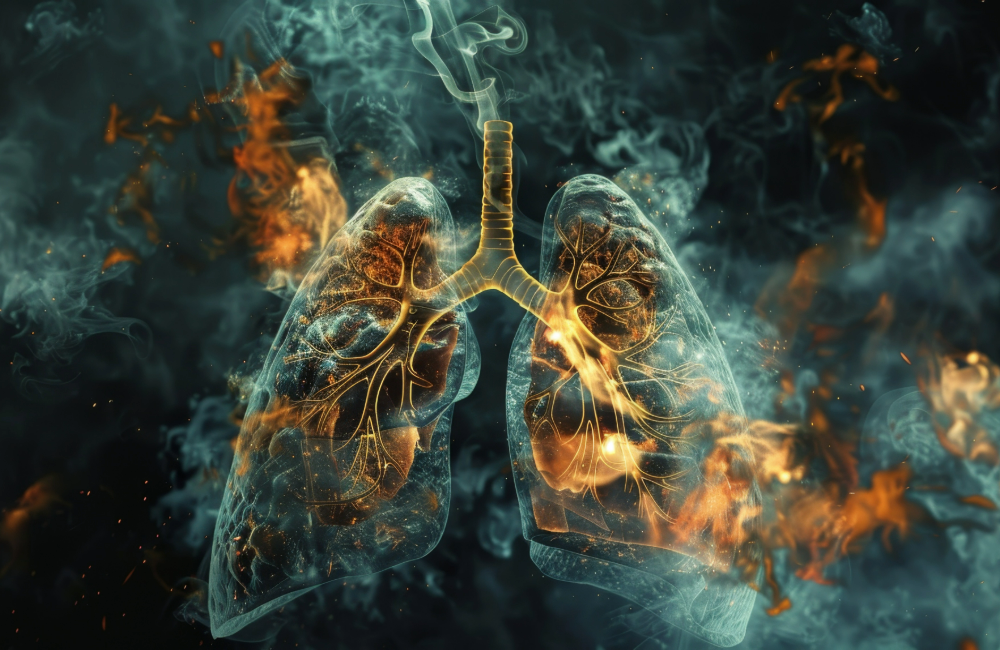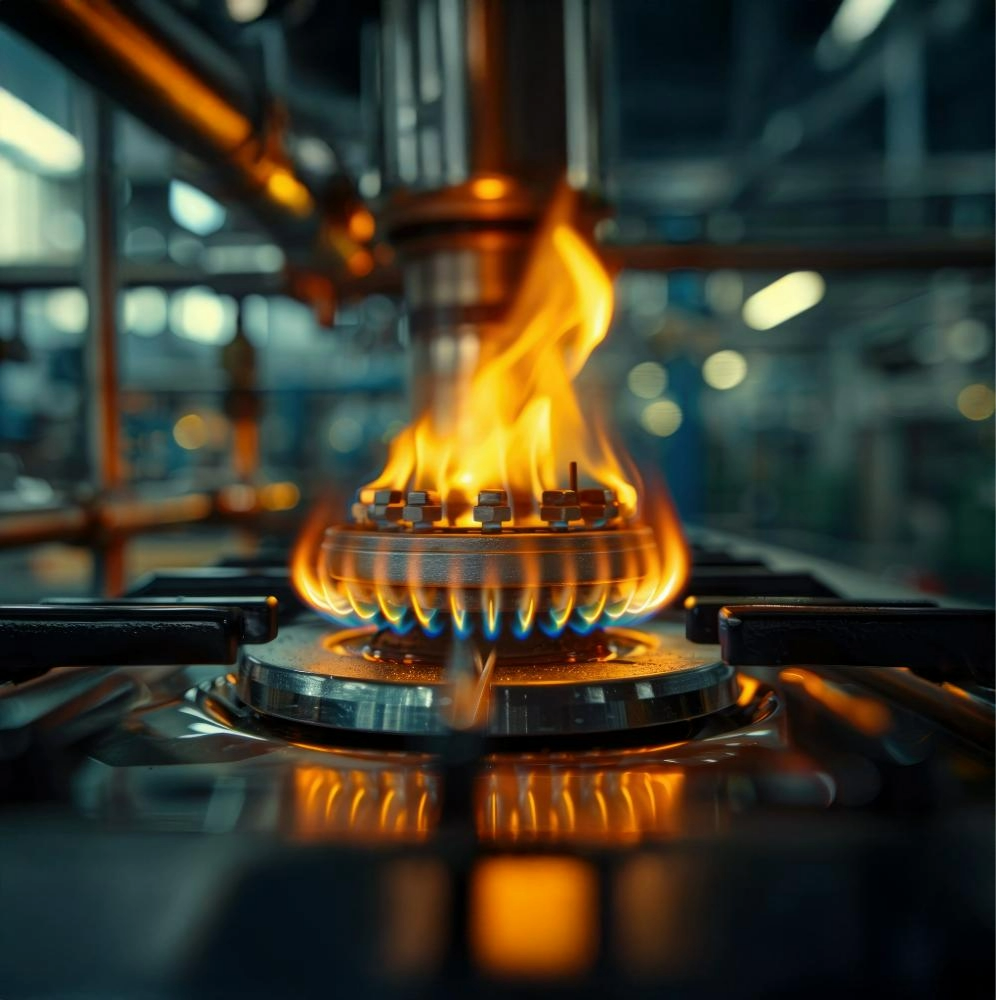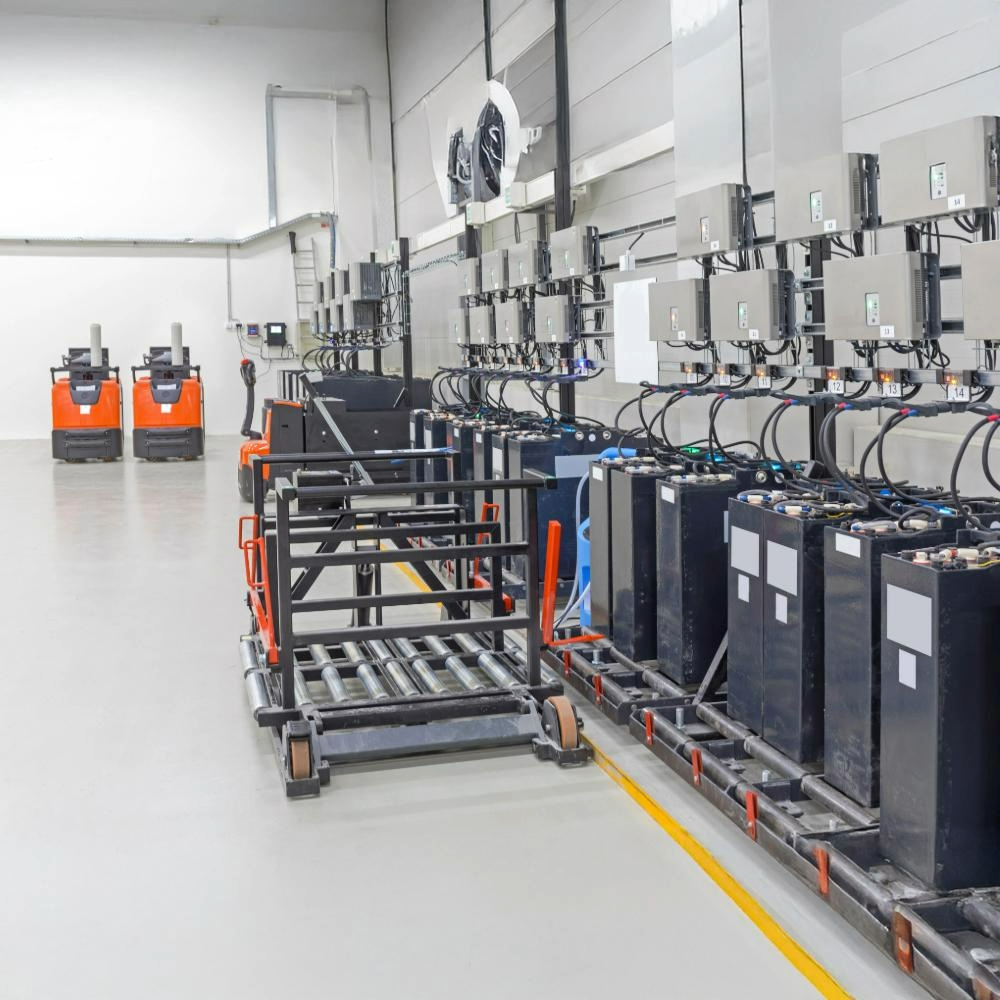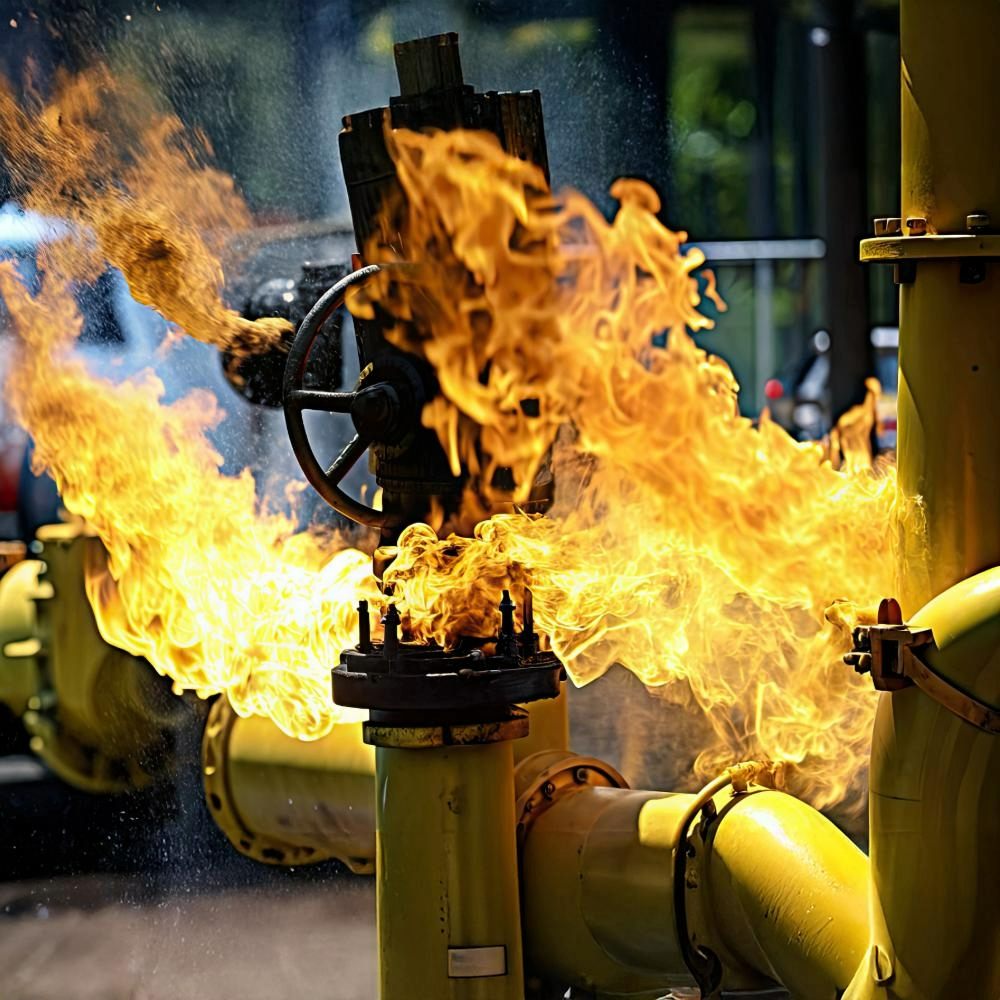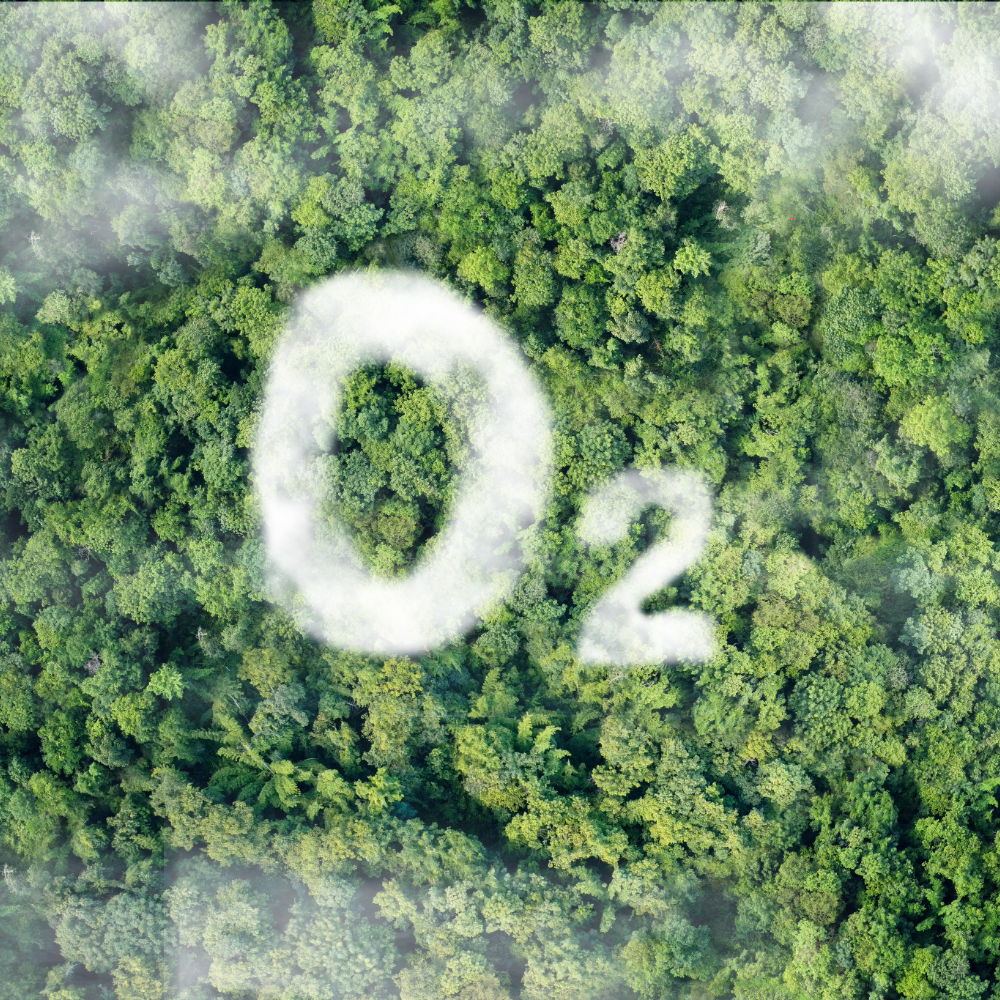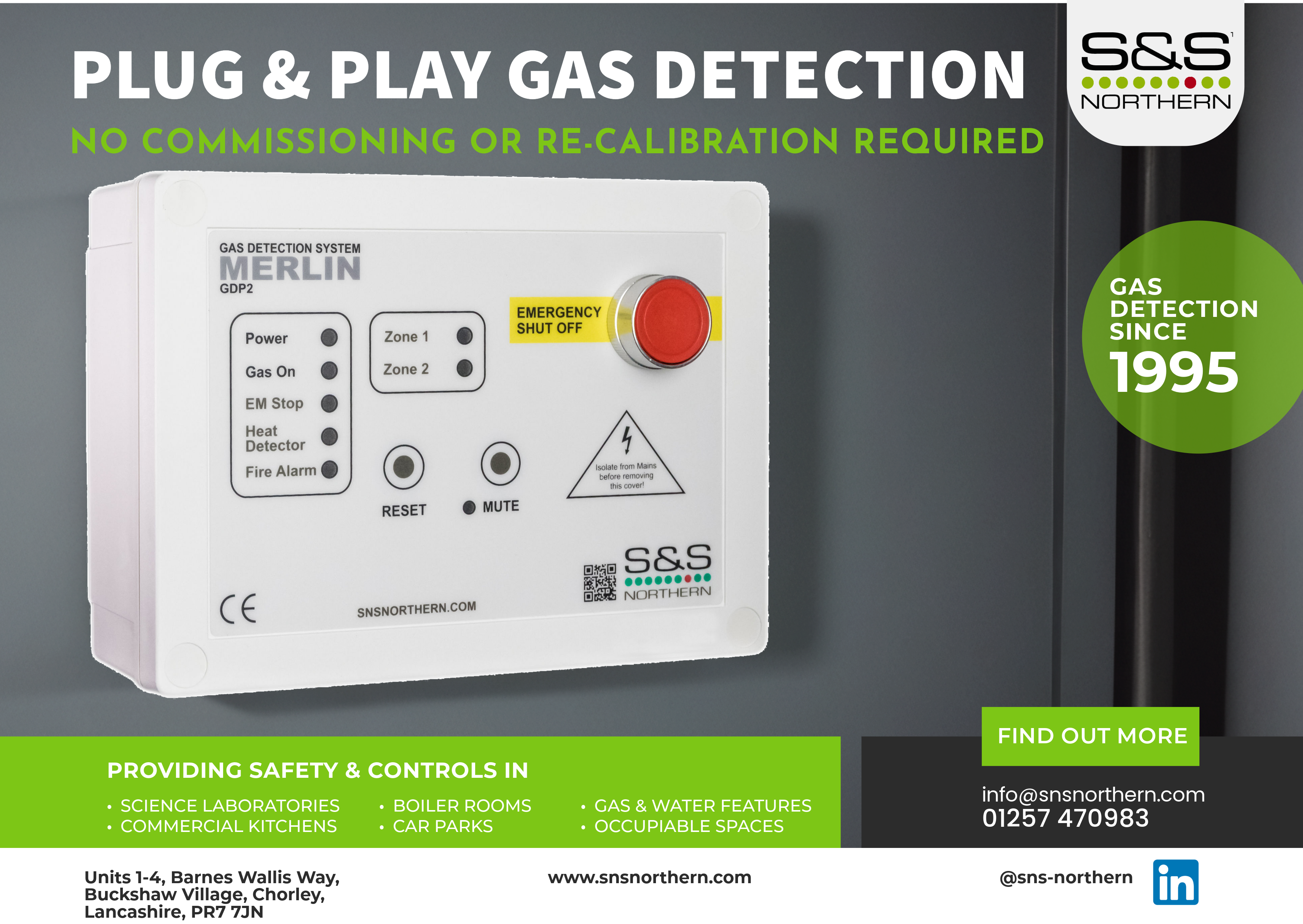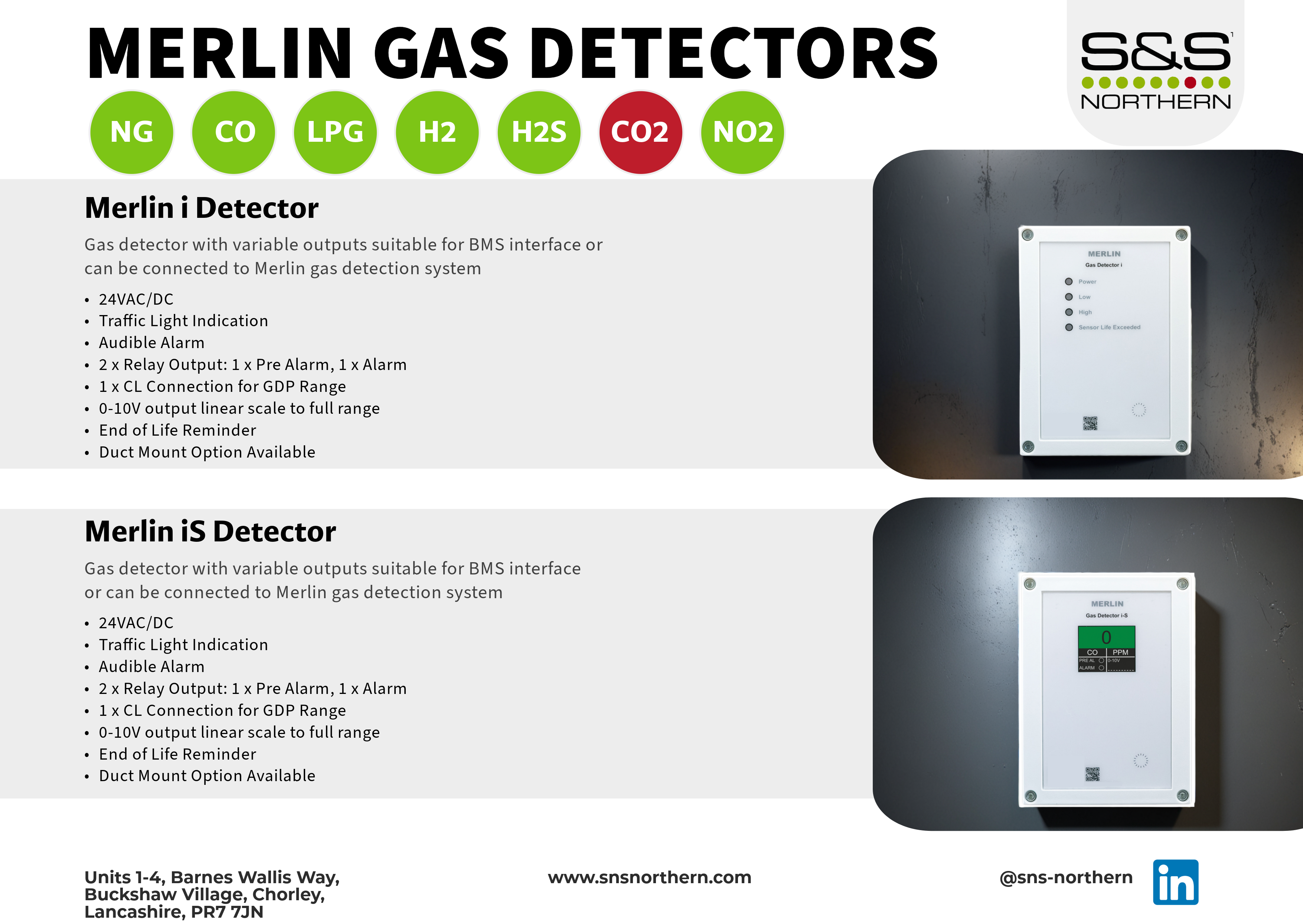Carbon monoxide (CO) is a colorless, odorless, and tasteless gas that poses a serious health hazard to humans and animals. It forms when fuels such as gasoline, natural gas, propane, coal, or wood burn incompletely due to insufficient oxygen.
Gases Information
Combustible & Toxic
Ensuring safety across various environments, each type of gas presents unique risks that require tailored detection and control solutions. Explore our comprehensive gas information library below to learn more about each gas we monitor, its properties, associated risks, and our solutions for maintaining safe, compliant spaces. Click on each gas icon for in-depth details and access to advanced detection and monitoring technologies.
Did You Know?
UK Manufacturer Since 1995
What is Carbon Monoxide:
How is Carbon Monoxide Formed:
CO is generated through incomplete combustion of carbon-containing fuels, a common occurrence in various commercial environments:
- Boiler Rooms: Fuel-powered boilers and furnaces produce heat, but poor maintenance or insufficient ventilation can lead to incomplete combustion, releasing CO.
- Kitchens: Gas stoves, ovens, and grills in commercial kitchens can emit CO if not properly vented or maintained.
- Laboratories: Equipment like Bunsen burners or gas chromatographs may release CO if operated without adequate ventilation.
- Parking Garages: Vehicles with internal combustion engines can lead to CO buildup in enclosed parking facilities if there’s insufficient ventilation.
Risks and Dangers:
- Health Hazards: CO is highly dangerous due to its lack of odor or color. Exposure can cause headaches, dizziness, nausea, confusion, and even unconsciousness. It’s especially hazardous for vulnerable groups like children and the elderly.
- Boiler Rooms and Mechanical Rooms: These spaces contain fuel-burning equipment, which may emit CO if not maintained or ventilated properly. Regular inspection is essential to prevent dangerous CO levels.
- Kitchens: Inadequate ventilation in commercial kitchens with gas appliances increases the risk of CO exposure. Proper ventilation and regular equipment maintenance are critical for safety.
- Parking Garages: CO emissions from vehicles can accumulate in indoor or underground parking facilities without proper ventilation. CO detectors and effective ventilation systems are vital to protect occupants.
- Laboratories: Incorrect use or poor ventilation of gas-powered lab equipment like Bunsen burners can lead to CO emissions. Strict safety protocols and equipment maintenance are required to ensure a safe lab environment.
Environmental Impact:
- Air Pollution: CO emissions are a significant contributor to air pollution, particularly in urban areas with heavy traffic and industrial activity.
- Health Effects: Prolonged CO exposure worsens respiratory issues and can elevate the risk of cardiovascular diseases, posing serious health risks for vulnerable populations.
- Ground-Level Ozone Formation: CO contributes to the formation of ground-level ozone (O3), a pollutant linked to smog and respiratory problems.
- Contribution to Climate Change: Although CO is not a greenhouse gas, it interacts with other pollutants, indirectly contributing to global warming.
- Ecosystem Impacts: High CO levels can damage vegetation, disrupt ecosystems, and contribute to the acidification of water bodies.
Alarm Levels & Life Span:
Alarm Levels
Carbon monoxide (CO) detection systems are calibrated with distinct alarm thresholds to help ensure occupant safety across different exposure levels:
- Low-Level Alarm: S&S Northern set CO detectors at 20 ppm (parts per million), this threshold provides early warning when CO levels begin to rise, allowing building staff to investigate potential sources before they escalate. Low-level alarms are critical in areas like boiler rooms, commercial kitchens, and laboratories where even modest CO buildup may indicate equipment malfunction or ventilation issues.
- High-Level Time-Weighted Average (TWA) Alarm: The TWA threshold for carbon monoxide exposure is designed to monitor long-term exposure over an 8-hour period, providing a safety guideline for environments where occupants might be exposed to low levels of CO over extended periods:
- 20ppm (After two hours)
- 50ppm (After one hour)
- 100ppm (After ten minutes)
- 300ppm (After one minute)
Detector Life Span
S&S Carbon monoxide detectors have a life span of 5 years under standard conditions, depending on environmental factors and usage frequency. For consistent reliability, CO detectors should undergo routine calibration and sensor testing. Replacement at the end of their life span is essential to maintain safety, especially in high-risk areas where CO exposure can rapidly become hazardous.
What is Methane:
Methane (CH₄) is a colorless, odorless gas that is highly flammable. It is a primary component of natural gas and is commonly used as a fuel in heating, cooking, and energy generation. While methane itself is non-toxic, its flammability and potential to displace oxygen make it a significant hazard in both industrial and commercial settings.
How Methane is Formed:
Methane is both naturally occurring and produced through industrial activities. In commercial settings, methane may be released from natural gas combustion processes or equipment leaks. Here’s how methane presence can occur in key environments:
- Boiler Rooms: Natural gas is often used to fuel boilers. Poorly maintained equipment or faulty valves can lead to methane leaks, creating potential explosive hazards.
- Commercial Kitchens: Methane leaks can happen in gas-powered stoves, ovens, and grills if appliances are not correctly maintained or if connections loosen over time.
- Laboratories: Methane is sometimes used as a fuel source in laboratories, particularly in experiments that require gas-powered equipment. Leaks can occur from gas cylinders or other fuel storage if not handled or maintained properly.
Risks and Dangers:
- Explosion and Fire Hazards: Methane’s high flammability makes it especially dangerous in enclosed spaces like boiler rooms and kitchens, where gas leaks can quickly reach explosive levels if undetected.
- Oxygen Displacement: In enclosed environments, methane can displace oxygen, leading to an increased risk of asphyxiation. This is particularly concerning in confined spaces like boiler rooms or small laboratories.
- Health Implications: Methane itself is non-toxic, but its ability to reduce oxygen levels can lead to symptoms like dizziness, nausea, and in severe cases, unconsciousness or respiratory distress, particularly in poorly ventilated areas.
Environmental Impact:
Methane contributes significantly to environmental challenges, especially through its impact on climate and air quality.
- Greenhouse Gas: Methane is a potent greenhouse gas with over 25 times the heat-trapping potential of carbon dioxide over a 100-year period, contributing heavily to global warming.
- Air Quality Degradation: In urban areas, methane leaks contribute to ground-level ozone formation, affecting air quality and exacerbating respiratory issues.
- Impact on Natural Environments: Methane emissions contribute to atmospheric changes that affect ecosystems and may lead to adverse effects on vegetation and water bodies nearby.
Alarm Levels & Life Span:
- Alarm Levels: The S&S Methane detectors typically alarm at 10% of the Lower Explosive Limit (LEL) to ensure early detection in sensitive areas like boiler rooms, kitchens, and laboratories.
- Detector Life Span: The S&S Methane sensors end of life for methane is 10 years, depending on their exposure to gas concentrations, environmental conditions, and maintenance practices. Regular calibration and servicing are critical to maintaining sensor accuracy and reliability, particularly in high-risk areas.
What is Carbon Dioxide:
Carbon Dioxide (CO₂) is a naturally occurring, colorless, and odorless gas essential to life on Earth. Plants use CO₂ in photosynthesis to produce oxygen, making it a vital component of the carbon cycle. Despite its crucial role in supporting life, CO₂ is also a significant greenhouse gas that contributes to global warming when present in excess.
How is CO2 Formed:
CO₂ is produced through various natural and industrial activities, including:
- Respiration: Humans and animals release CO₂ as a byproduct of respiration.
- Combustion: Burning fossil fuels like wood, coal, and natural gas generates CO₂. This is common in boiler rooms and commercial kitchens.
- Decomposition: Microbial decomposition of organic matter releases CO₂.
- Industrial Processes: Certain manufacturing processes (e.g., cement production) emit significant amounts of CO₂.
- Refrigeration Systems: CO₂ is used as an alternative refrigerant, particularly in HVAC systems, due to its lower environmental impact compared to other refrigerants.
Risks and Dangers:
- 1. Boiler Rooms
- Risks: Boiler rooms use fuel combustion, which can result in CO₂ emissions. In enclosed spaces, CO₂ buildup can displace oxygen, increasing asphyxiation risks for maintenance personnel.
- Importance of Detection: Continuous CO₂ monitoring in boiler rooms helps maintain air quality, minimizing the risk of CO₂ accumulation and ensuring safe working conditions.
2. Laboratories
- Risks: Scientific experiments in labs can produce CO₂, making proper ventilation crucial. Elevated CO₂ levels pose risks, particularly in schools where students and staff are regularly exposed.
- Example: In science labs, experiments often release CO₂, and without proper ventilation or monitoring, this can reach hazardous levels, affecting cognitive function and overall safety.
3. Commercial Kitchens
- Risks: CO₂ is a byproduct of gas-powered stoves and ovens. Poor ventilation in commercial kitchens can lead to increased CO₂ exposure, posing health risks to kitchen staff.
- Solution: Installing CO₂ detectors in kitchens helps manage indoor air quality, ensuring that CO₂ levels remain safe for staff and customers in cafeterias and restaurants.
4. Classrooms and Conference Rooms
- Risks: High occupancy in classrooms and meeting rooms can lead to elevated CO₂ levels due to respiration, causing drowsiness, headaches, and impaired focus.
- Example: CO₂ monitoring in schools and office buildings ensures that ventilation systems adjust based on occupancy, helping maintain productivity and comfort.
5. Maintenance and Storage Rooms
- Risks: Storage areas housing CO₂ cylinders, or maintenance rooms where CO₂ is used, can be hazardous if CO₂ leaks occur. Without proper ventilation, these spaces can reach dangerous concentrations.
- Solution: CO₂ detection systems in storage and maintenance rooms alert staff to potential leaks, safeguarding against suffocation risks.
Health Risks of Elevated CO₂ Levels- Low Concentrations: Increased heart rate, minor discomfort, and respiratory changes.
- Moderate Concentrations: Headaches, dizziness, and confusion.
- High Concentrations: Unconsciousness, asphyxiation, and even death if left unaddressed.
-
Part F Requirements for CO2 Monitors in Occupiable Spaces
In June 2022, Part F of the Building Regulations was updated to address ventilation requirements in commercial buildings in England. Here are the key aspects related to CO2 monitoring:
Applicability
- Occupiable Rooms: The regulation specifies that certain types of occupiable rooms in new buildings require monitoring of indoor air quality. This includes:
- Offices.
- Spaces where activities like singing, loud speech, or aerobic exercises occur (e.g., gyms, theaters, nightclubs).
- Public gathering spaces (e.g., hotels, assembly halls).
- Rooms maintained at low temperatures and humidity (e.g., food processing areas, cold storage).
- Exemptions: The monitoring requirement does not apply to:
- Small spaces with a volume of up to 125 m³ or a floor area of 50 m².
- Large spaces with a volume over 800 m³ or a floor area of 320 m².
Monitoring Requirements
- Type of Monitor:
- CO2 monitors must be non-dispersive infrared (NDIR) type for accurate measurement.
- Power Supply:
- The monitors must be mains powered to ensure reliability and continuous operation.
- Placement:
- Monitors should be installed at breathing height, ideally away from windows, doors, or ventilation openings to avoid inaccurate readings.
- They should be positioned at least 500mm from individuals to minimize interference with the readings.
- Occupiable Rooms: The regulation specifies that certain types of occupiable rooms in new buildings require monitoring of indoor air quality. This includes:
Environmental Impact:
- CO₂ emissions significantly impact the environment, contributing to climate change:
- Global Warming: As a greenhouse gas, CO₂ absorbs heat, trapping it in the atmosphere and leading to rising global temperatures.
- Ocean Acidification: CO₂ dissolves in ocean water, forming carbonic acid that lowers the pH of oceans, impacting marine life and coral reefs.
- Extreme Weather and Ecosystem Changes: Higher CO₂ levels are linked to more intense weather events and disruptions in natural ecosystems.
Alarm Levels & Life Span:
- Alarm Levels: To ensure safety, CO₂ detectors have pre-set alarm levels and alarm levels. The S&S range have various alarm levels available, with most at 2,800 pre alarm and 4,500ppm alarm. Generally, levels around 5,000 ppm indicate moderate exposure, while levels above 30,000 ppm can be hazardous. Customized thresholds based on industry standards are applied to alert staff before dangerous levels are reached.
- Detector Life Span: Typical CO₂ detectors last between 10 years, depending on environmental factors and regular maintenance. Periodic recalibration helps maintain sensor accuracy.
What is Hydrogen:
Hydrogen is the simplest, lightest, and most abundant element in the universe, identified by the chemical symbol H and atomic number 1. In its natural diatomic form (H₂), it is a colorless, odorless, and highly flammable gas. Hydrogen is essential to many natural and industrial processes, playing a pivotal role in energy production, chemical synthesis, and potential green energy solutions, especially as industries move toward more sustainable practices.
How Hydrogen is Formed:
Hydrogen can be generated through various natural and industrial processes:
- Steam Methane Reforming (SMR): The most common industrial method, in which natural gas reacts with high-temperature steam to produce hydrogen, carbon monoxide, and carbon dioxide. However, this method has a high carbon footprint.
- Electrolysis: Splitting water into hydrogen and oxygen via electric current. When powered by renewable energy, this yields “green hydrogen” with no greenhouse gas emissions.
- Partial Oxidation: Hydrocarbons like oil and gas are partially burned in limited oxygen, producing hydrogen and carbon monoxide.
- Biomass Gasification: Organic material (e.g., agricultural waste) is converted to hydrogen by heating it in a low-oxygen environment, offering a more sustainable method when properly managed.
- Photobiological and Photochemical Processes: Experimental methods that use sunlight and certain organisms or materials to produce hydrogen.
Risks and Dangers:
Hydrogen poses several risks, especially in confined or enclosed spaces, requiring vigilant safety protocols:
-
- Flammability and Explosiveness:
- Hydrogen ignites easily and forms explosive mixtures with air, so well-designed ventilation and sensitive leak detection are essential.
- Leak Detection Challenges:
- Hydrogen’s small molecular size allows it to escape through small spaces and accumulate undetected, necessitating specialized detectors.
- Common Risk Areas:
- Boiler Rooms: Risks include potential hydrogen accumulation from leaks, necessitating strict ventilation protocols.
- Laboratories: Safe handling and leak detection in labs are critical to prevent accidental ignition.
- Kitchens and Storage Areas: Hydrogen appliances in kitchens require stringent maintenance, and enclosed storage areas must be regularly monitored for leaks.
- Flammability and Explosiveness:
Environmental Impact:
Hydrogen’s environmental impact varies based on its production method:
- Positive Impacts:
- Emission-Free Energy: Hydrogen, especially from green sources, produces only water vapor, significantly reducing greenhouse gas emissions.
- Air Quality Improvement: Hydrogen fuel cells release no harmful pollutants, making them preferable for urban areas seeking to reduce air pollution.
- Negative Impacts:
- CO₂ Emissions in Production: Most hydrogen is produced using natural gas, which emits CO₂ unless paired with carbon capture technologies.
- Resource-Intensive Electrolysis: Producing hydrogen through electrolysis consumes large quantities of water and energy, impacting regions where these resources are scarce.
Alarm Levels & Life Span:
- Hydrogen Alarm Levels: The S&S Hydrogen gas detectors are factory set at 8% pre alarm and 10% alarm levels.
- Sensor Life Span: Regular maintenance and periodic calibration are recommended to maintain sensor accuracy, typically every 6-12 months. The life span is 10 years.
What is Propane:
Propane is a colorless, odorless gas at room temperature, classified as a Liquefied Petroleum Gas (LPG). It is primarily used as fuel for heating, cooking, and in vehicles. Propane is stored under pressure, which converts it into a liquid form, making it easy to transport and use. Its versatility and efficiency have made it a popular choice in both residential and commercial applications.
How Propane is Formed:
Propane is produced during the extraction of natural gas and oil. It is a byproduct of the refining process and can also be obtained from natural gas processing. The primary steps involved in propane formation include:
- Extraction: Natural gas and crude oil are extracted from underground reservoirs.
- Separation: Propane is separated from the natural gas and crude oil during processing.
- Refinement: The separated propane undergoes refinement to remove impurities and enhance its quality.
- Storage and Transport: Propane is stored in liquid form under pressure and transported in cylinders or bulk tanks.
Modern extraction and refinement technologies have improved efficiency while minimizing environmental impacts.
Risks and Dangers:
Propane poses several dangers, particularly in confined spaces like boiler rooms, kitchens, and laboratories:
-
- Explosion Risk:
- Accumulated propane gas can lead to explosions if ignited, particularly in enclosed areas where gas can build up undetected.
- Asphyxiation:
- Propane can displace oxygen in confined spaces, creating a suffocation hazard for those exposed to high concentrations.
- Fire Hazard:
- Propane is highly flammable; leaks can ignite from sparks or flames, resulting in uncontrolled fires.
- Chemical Reactions:
- Propane may react with other chemicals in laboratories, creating hazardous situations that can lead to explosions or toxic gas emissions.
- Burns and Scalds:
- High-temperature propane appliances can cause severe burns or scalds if improperly handled.
- General Leakage Risks:
- Undetected leaks can lead to dangerous gas accumulation, necessitating regular inspections and maintenance.
- Explosion Risk:
Environmental Impact:
The environmental impact of propane includes both positive and negative aspects:
- Positive Impacts:
- Lower Emissions: Propane burns more cleanly than traditional fossil fuels like coal and oil, resulting in lower levels of pollutants and greenhouse gases.
- Efficient Fuel: High energy content and efficient combustion make propane a relatively eco-friendly option compared to other fossil fuels.
- Negative Impacts:
- Fossil Fuel Contribution: Despite its cleaner burning properties, propane is still a fossil fuel, contributing to greenhouse gas emissions and climate change.
- Environmental Contamination: Propane leaks can lead to soil and water contamination, affecting air quality and posing risks to wildlife.
Alarm Levels & Life Span:
When it comes to propane detection systems, understanding alarm levels and the expected lifespan of detectors is crucial:
- Alarm Levels:
- Propane detectors typically feature multiple alarm levels, often set to alert users at various concentrations of propane in the air. S&S thresholds include:
- Low Alarm (8% LEL): Indicates the presence of propane and prompts investigation.
- High Alarm (10% LEL): Signals a more immediate threat, requiring urgent action to evacuate and ventilate the area.
- Propane detectors typically feature multiple alarm levels, often set to alert users at various concentrations of propane in the air. S&S thresholds include:
- Life Span of Detectors:
- The lifespan of propane detectors varies by model and manufacturer, but many have a typical lifespan of 10 years. Regular testing and replacement of expired detectors are essential for maintaining safety and compliance with regulations.
What is Oxygen:
Oxygen is a colorless, odorless gas that is essential for life on Earth. It constitutes about 21% of the Earth’s atmosphere and is vital for respiration in humans and animals, as well as for combustion processes. Oxygen is produced naturally through photosynthesis, primarily by plants and algae, which convert carbon dioxide and sunlight into oxygen and glucose. In industrial applications, oxygen is used in various sectors, including healthcare, manufacturing, and energy production.
How Oxygen is Formed::
Oxygen is primarily formed through two natural processes:
- Photosynthesis:
- Plants, algae, and some bacteria absorb carbon dioxide and sunlight, converting them into glucose and oxygen. This process is crucial for maintaining the balance of gases in the atmosphere.
- Electrolysis of Water:
- In industrial settings, oxygen can be produced by electrolyzing water, which involves splitting water molecules into hydrogen and oxygen using electricity.
- Air Separation:
- Oxygen can also be extracted from the air using cryogenic distillation or pressure swing adsorption, where nitrogen and other gases are separated from oxygen for various applications.
Risks and Dangers:
While oxygen is essential for life, it also poses certain risks, especially in high concentrations:
- Fire Hazard:
- Oxygen supports combustion. Elevated oxygen levels can lead to increased flammability of materials, making fires more likely to ignite and spread quickly.
- Oxygen Toxicity:
- High concentrations of oxygen, particularly above 21% for extended periods, can be toxic, leading to symptoms like respiratory issues, lung damage, and in extreme cases, seizures or death.
- Material Degradation:
- Oxygen can cause oxidation in metals and other materials, leading to corrosion, rust, and material degradation over time.
- Asphyxiation:
- While rare, displacing nitrogen with pure oxygen can lead to a lack of breathable air, posing a suffocation risk in enclosed spaces.
Environmental Impact:
Oxygen itself does not have a direct environmental impact as it is a natural component of the atmosphere; however, its production and usage can have indirect effects:
- Positive Impacts:
- Essential for Life: Oxygen is crucial for the survival of aerobic organisms, including humans, animals, and many plants.
- Combustion Processes: Oxygen is necessary for combustion in power generation, providing energy while producing heat and light.
- Negative Impacts:
- Air Pollution: The burning of fossil fuels for energy releases various pollutants that can consume oxygen, affecting air quality.
- Depletion of Resources: Excessive oxygen use in industrial processes can lead to local environmental degradation if not managed properly.
Alarm Levels & Life Span:
When it comes to oxygen detection systems, understanding alarm levels and lifespan is important for safety in various environments:
- Alarm Levels:
- S&S oxygen monitors feature alarm levels that alert users to low or high concentrations of oxygen:
- Low Alarm (19.5%): Indicates low oxygen levels, prompting immediate action to ventilate the area.
- High Alarm (23%): Signals dangerously high oxygen levels, posing a fire risk and requiring evacuation.
- S&S oxygen monitors feature alarm levels that alert users to low or high concentrations of oxygen:
- Life Span of Detectors:
- The lifespan of S&S oxygen detectors is 2 years. Regular maintenance, calibration, and timely replacement of expired detectors are essential to ensure accurate monitoring and compliance with safety standards.

